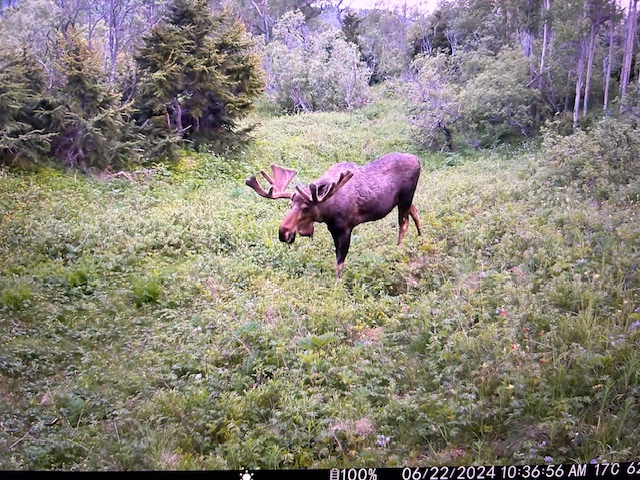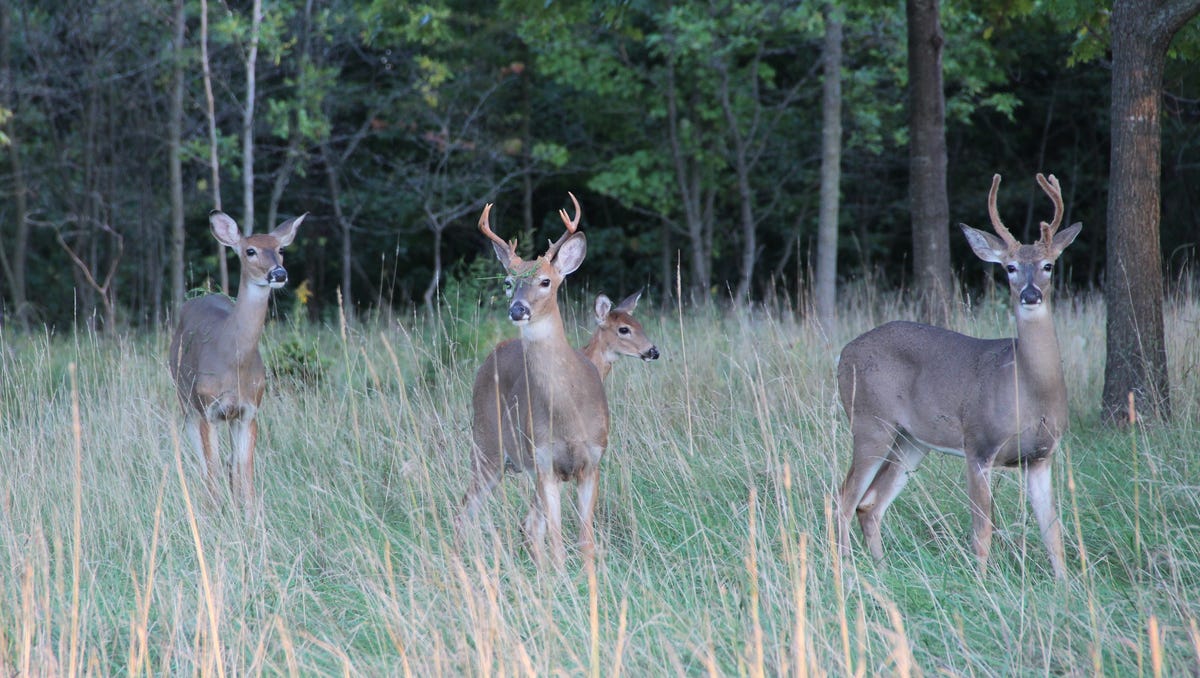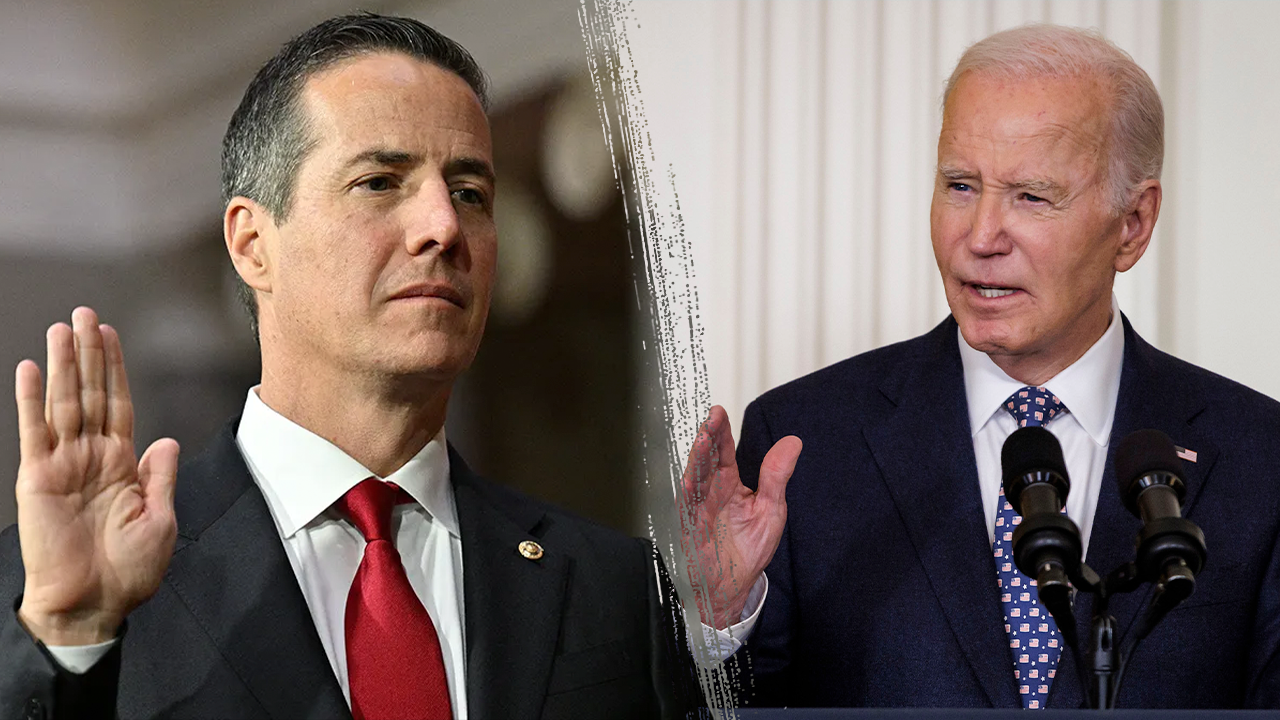Alaska
Q&A: What’s in the Water of Alaska’s Rusting Rivers, and What’s Climate Change Got to Do With it? – Inside Climate News

From our collaborating partner “Living on Earth,” public radio’s environmental news magazine, an interview by managing producer Jenni Doering with Jon O’Donnell, ecologist for the Arctic Inventory and Monitoring Network at the National Park Service.
The rapid climate change happening to our planet is often invisible.
Think of rising carbon dioxide levels in the atmosphere, or heat waves across the globe.
But in the far north of Alaska some changes are impossible not to see.
That’s because dozens of crystal-clear streams in the Brooks Range are turning a cloudy orange.
We’re hiring!
Please take a look at the new openings in our newsroom.
See jobs
A 2024 paper published in the Nature journal Communications: Earth and Environment connects the change to rapidly thawing permafrost that appears to be releasing metals like iron into these streams.
Lead author Jon O’Donnell is an ecologist for the Arctic Inventory and Monitoring Network at the National Park Service. This interview has been edited for length and clarity.
JENNI DOERING: So when did you first notice that the streams in Alaska’s Brooks Range looked rusty? And what was your reaction?

JON O’DONNELL: So we were monitoring a site in Kobach Valley National Park, on the Akillik River. And we had been collecting samples there, water samples and biological samples, like fish and bugs. That was in 2017. And when we went back in August of 2018, for a site visit, we noticed that the stream had turned orange. And this was surprising to us. And so you know, we were accessing this site in a small helicopter. And you know, my initial thoughts were, this is kind of an important thing to document. But I kind of thought it was maybe just anomalous, or a case study, where you know, this might just be a one-off thing, but it’d be a good story. So we should do a good job, collect all the samples that we need to collect. So we grabbed water samples, and we collected fish and bugs. And then, when we went back out in 2019, we were flying around the region, and we noticed that there were more streams than we had previously noticed, had turned orange. And that was kind of when I started to think that this might be a bigger issue than this anomalous one stream in Kobach valley, that it may be a bigger issue. And at that point, we started trying to compile observations from across the Brooks Range.
DOERING: So you mentioned that you did some water sampling. And you were finding these minerals in the water samples. What kinds of minerals have you been collecting?
O’DONNELL: Yeah, so we collect water samples from these orange streams, and then nearby clear water streams. And we measure the same suite of chemicals on all of them. So the orange in the stream, that is a reflection of iron. And so those are iron particulates, it makes the stream very turbid or filled with particles. And then those particles often get deposited on the stream bed, and so they blanket the rocks and the sediments in the bottom of the stream. But in addition to the iron, we see that these orange streams are more acidic, so they have a lower pH than, than clear water streams. And there’s a whole range of trace metals that are potentially toxic, both in terms of drinking water and for life that are living in these streams. And so examples of those trace metals that we’ve seen are like zinc and copper and arsenic and cadmium and a range of others that are elevated in concentration in the orange streams.
DOERING: So what do you think is going on here? What do we know about what might be causing this change in the streams and rivers?
O’DONNELL: All of our observations point towards climate and permafrost thaw as a driver of this change. The reasons for that are one, the timing. So we’ve documented over 70 streams and rivers that have changed in the very recent past here, so in the last 10, 10- 5 years. And this is a period of time where the climate has warmed dramatically in the Arctic. There’s also evidence that in these specific watersheds, the climate has warmed past the point where permafrost can stay cold and stay frozen. And so we know that permafrost is thawing in this region. And when permafrost thaws, that changes the hydrology of these watersheds. So you can imagine these mineral deposits being contained in what is essentially a freezer. And as the permafrost thaws, that’s kind of like shifting them to a refrigerator. And so now things can melt, ice can melt, water can flow. And so what we’re seeing is that we think groundwater is flowing through these soils and mineral deposits, where permafrost has thawed. And that is creating this chemical reaction that’s releasing all these metals and acid into the streams.


DOERING: Why are these metals and chemicals concerning? What effects could they have on wildlife and people in the area?
O’DONNELL: Right now we’re working to try to determine if these concentrations of metals have exceeded EPA, Environmental Protection Agency, thresholds for both aquatic life and for drinking water. And so we don’t have a definitive answer on that yet. At the concentrations, we know that this would affect taste of drinking water, so it might be more metallic. But one of our concerns is that these metals will be accumulated from the base of the foodweb through like algae and macroinvertebrates or bugs that live in the bed of the stream, up into fish, you know, similar to what people have shown with like mercury that can bio accumulate and magnify within a food web, and then it gets into fish and then into people if they eat the fish. So we’re concerned because these metals can be toxic both to the aquatic life, but into the people that might rely on the fish as part of their diet. And the stream where we were monitoring, and it changed from clear water to orange, when we first went there, and when it was a clear water stream, it had a really healthy fish population. So lots of small Dolly Varden. And these little resident fish, called slimy sculpin, there was just a lot of them. When we went back after the stream changed color, and it had turned orange, there were no fish. All the fish were gone. We did the exact same protocol for sampling, and the fish had disappeared. And the macroinvertebrate insects, the bugs that reside in the bed of the stream, their numbers declined dramatically with this change. So our thought probably is that the fish migrated out of this river to a better habitat. But there’s also a chance that they were impacted by this bio accumulation of metals up through the food web. And so this was just one instance, where we’ve measured this, we’re continuing our work now to try to figure out really, how are these fish being affected, but our initial thought is that the fish just left, the stream turned orange, and it was not a good habitat for them anymore.
DOERING: It’s amazing how rapidly these changes seem to have happened. I mean, it’s, you know, one year to the next, you notice these really rapid, significant changes, which is rare often when we’re studying what’s happening with climate change. How extensive is this issue in Alaska and beyond?
O’DONNELL: These observations that we have sort of span from the lower Noatak River Basin, in the West, all the way to the Arctic National Wildlife Refuge in the east. So it’s a you know, over 1000 kilometers. We’ve also been getting reports of observations from other areas in Alaska. So the North Slope, north of the Brooks Range, the Yukon River Basin to the south. So these are all watersheds and regions that are in permafrost zones. And so it’s possible that permafrost thaw is driving these observations elsewhere. There is some evidence in the literature for this kind of thing to be happening in non-permafrost regions, such as in the Alps, and in the Andes, in South America, where you have mountain glaciers, and when these glaciers melt, you expose minerals and rocks. And so similar process, except in these other regions, we’re talking about glaciers melting, as opposed to permafrost thawing.
DOERING: You know, this era that we’re living in is often called the Anthropocene, the age that’s shaped by humans. And it sounds like in this case, we’re changing geological processes. I mean, climate change is changing so many different geological processes, but it’s even changing the way that minerals are coming out of the soil.
O’DONNELL: Yeah, and I would say that the Arctic, because it’s so remote, and because of some of the unique features of the Arctic, it’s changing at a faster pace than other regions, like temperate and tropical regions and the globe as a whole. You know, I think the latest evidence shows that the Arctic is warming about four times faster than the Earth as a whole. And because of that, and because of the permafrost, and because of how much carbon and other things are stored in the soils up here, there’s potential for really rapid change, and really dramatic alteration of ecosystems up here that you don’t necessarily see in other parts of the planet. And so yes, the fact that there are these anthropogenic warming effects that are driving climate change in the Arctic and permafrost thaw, and ultimately, this release of mineral compounds, trace metals into streams, that’s a really unique set of factors that we wouldn’t necessarily have foreseen when thinking about climate change in the Arctic.
This story is funded by readers like you.
Our nonprofit newsroom provides award-winning climate coverage free of charge and advertising. We rely on donations from readers like you to keep going. Please donate now to support our work.
Donate Now
DOERING: Jon, what is it like to be studying this and seeing these changes as a scientist?
O’DONNELL: Yeah, so I’ve been working in Alaska now for over 20 years. And I view my job as an ecologist, is basically to document the changes that are occurring. And I’ve worked on a number of different types of studies related to wildfire, permafrost thaw and carbon cycling, things like that in the Arctic. This is by far the most surprising set of observations that I’ve been a part of in my time up here. And I think that it is shocking in terms of how fast it’s happening and the spatial scale at which it’s happening. As somebody who has documented these changes for over 20 years, I’ve become somewhat used to or maybe desensitized from some of the more dramatic things going on. When I sent this paper to my parents who live on the east coast in Philadelphia, they responded by saying that they were depressed and saddened by what they were seeing. And because I’m so used to just functioning as a scientist, I maybe separate my emotional responses from some of these dramatic things that are happening up here. But talking to the public and talking to my family and friends, I’ve kind of been forced to realize that there’s this emotional response that people have to wilderness and to nature, and to places like national parks that people love to go and visit, and when they see them undergoing this sort of change, it’s upsetting.

Alaska
Raised In Alaska Spotting Moose And Grizzly On Trail Cameras

We’re sharing some of the Last Frontier adventures of the popular YouTube account Raised In Alaska. This week: Moose and grizzly trail camera shots.
Subscribe to Raised In Alaska on YouTube. Follow on X, formerly known as Twitter (@akkingon).
Alaska
Fatal vehicle collision left one dead, two injured at mile 91 of Seward Highway, APD says

ANCHORAGE, Alaska (KTUU) – On Thursday, a vehicle collision at mile 91 of the Seward Highway left one dead and two injured, according to an update from APD.
The collision involved two vehicles — a semi-truck and a passenger vehicle.
The Girdwood Fire Department responded at about 8:41 p.m. and pronounced the male driver of the vehicle dead at the scene.
APD says a male and female were transported to the hospital with non-life-threatening injuries.
At the time of publication, the southbound and northbound lanes of the Seward Highway remain closed.
APD is currently investigating the circumstances of the collision and the victim’s identity will be released once they have completed next-of-kin procedures.
Original Story: An incident involving two vehicles at mile 91 of Seward Highway leaves two injured, according to Anchorage Police Department (APD).
APD is responding to the scene and travelers should expect closures at mile 91 for both northbound and southbound lanes of the Seward Highway for at least the next 3 to 4 hours.
Updates will be made as they become available.
See a spelling or grammar error? Report it to web@ktuu.com
Copyright 2025 KTUU. All rights reserved.
Alaska
Strong winds destroy deer shelter at Alaska Wildlife Conservation Center

ANCHORAGE, Alaska (KTUU) – Strong winds in the Portage area on Monday destroyed a shelter building at the Alaska Wildlife Conservation Center that was used to house Sitka deer. The conservation center says 80 mph winds swept through Portage Valley.
The conservation center says no animals were injured, but they are quickly raising money to rebuild. Their goal is $30,000, and as of Thursday morning, they have already fundraised over $26,000.
Sales & Marketing Director Nicole Geils said, “The shelter was in their habitat. It was essential for providing them a safe Haven during harsh weather. It’s a really useful area for when we’re feeding and doing enrichment with the deer and it’s also a safe space for recovery after medical procedures when needed.”
Executive Director Sarah Howard described how she learned about the damage.
“We had a staff member that radioed, ‘The shelter’s gone!’ And a couple of us were at least able to make a little light of the situation. Like, did it go to Oz? And thankfully, it didn’t go too far, and the deer were okay,” Howard said.
The conservation center is still accepting donations through their website.

See a spelling or grammar error? Report it to web@ktuu.com
Copyright 2025 KTUU. All rights reserved.
-

 Business1 week ago
Business1 week agoThese are the top 7 issues facing the struggling restaurant industry in 2025
-

 Culture1 week ago
Culture1 week agoThe 25 worst losses in college football history, including Baylor’s 2024 entry at Colorado
-

 Sports1 week ago
Sports1 week agoThe top out-of-contract players available as free transfers: Kimmich, De Bruyne, Van Dijk…
-

 Politics1 week ago
Politics1 week agoNew Orleans attacker had 'remote detonator' for explosives in French Quarter, Biden says
-

 Politics1 week ago
Politics1 week agoCarter's judicial picks reshaped the federal bench across the country
-

 Politics6 days ago
Politics6 days agoWho Are the Recipients of the Presidential Medal of Freedom?
-

 Health5 days ago
Health5 days agoOzempic ‘microdosing’ is the new weight-loss trend: Should you try it?
-

 World1 week ago
World1 week agoIvory Coast says French troops to leave country after decades













